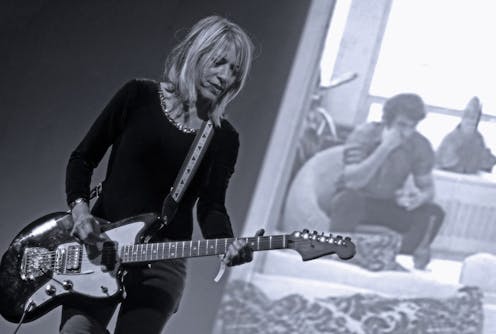Tired of hearing men talk to men about music? This Woman's Work changes the narrative brilliantly
- Written by Simmone Howell, Graduate researcher, English & Creative Writing, La Trobe University

I wanted to start this piece with the Laurie Anderson quote, “Talking about music is like dancing about architecture”, but it turns out[1] that Laurie never said it. And the adage has been through so many versions and origin stories that the harder I think on it, the more my head hurts.
Why can’t we write about music? Is it because we experience it in the body? Because we can’t see it to describe it? Is it just that we can’t write about music without writing about everything else?
In one of his last interviews, John Lennon, weary from years of scrutiny and over-interpretation, said
Listen, writing about music is like talking about f … ing. Who wants to talk about it? But you know, maybe some people do want to talk about it.
Historically, men have done most of the talking and writing about music. Publications of women’s music criticism exist but they are few and far between. In the last decade, more female voices have emerged, most notably in the area of memoir.
Read more: We crunched the numbers on ten recent ‘world’s best guitarist’ lists. Where are the women?[2]
Often these are works of correction – Tracey Thorn’s My Rock’n’Roll Friend[3] about Lindy Morrison’s pivotal role in the Go-Betweens comes to mind – but there is room for more. This Woman’s Work, a collection of essays by women about music, edited by Kim Gordon and Sinead Gleeson, is a sharp reminder of what we could have been reading all along.
The book takes its title from a Kate Bush song, which takes the perspective of a man whose wife is having a life-threatening labour. It describes a moment of realisation for him:
suddenly it’s the point where he has to grow up. He’d been such a wally up to this point.
This sentiment echoes where we are at in the world right now: the veil is down, the patriarchy is showing (wall-to-wall wallies). Even without the intel[4] on Bush’s lyrics, the phrase “This Woman’s Work” feels fraught with associations of The Handmaid’s Tale[5], shitwork, invisible labour, sexism, misogyny and dismissal, but maybe I am just bitter from spending the 1990s in record shops hearing men talking to men about music.
Read more: My favourite album: Kate Bush's Hounds of Love[6]

















